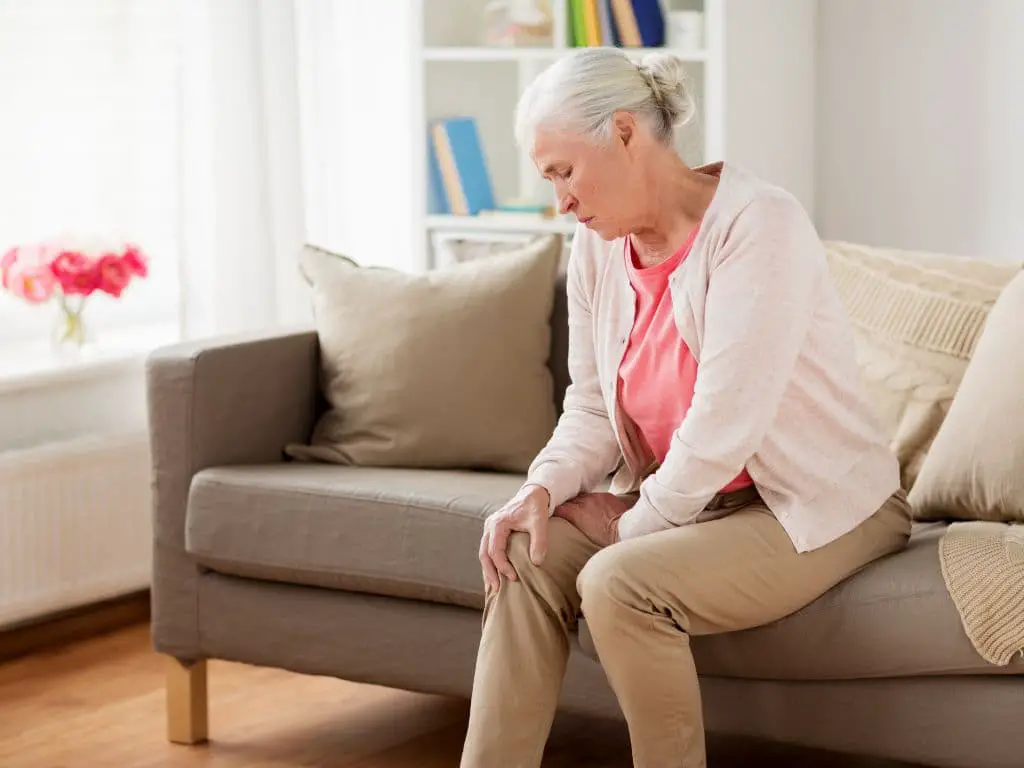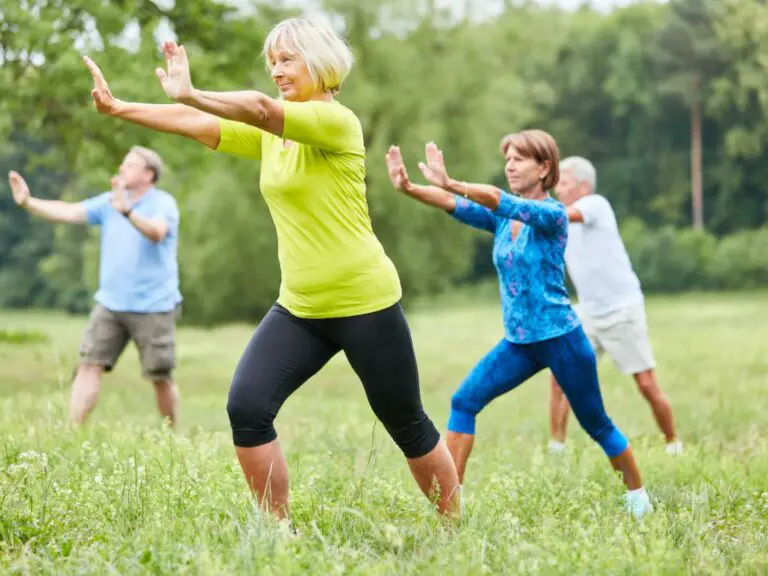What Is Leaning Forward a Symptom Of?
Forward lean, also known as stooped posture, is characterized by an exaggerated bending forward of the trunk and head. It is a common occurrence in elderly individuals as they age. Forward lean often begins gradually but can progress over time. In severe cases, individuals may be bent forward up to 45 degrees.
Some key features of forward lean include:
- Rounded upper back and shoulders
- Head protruding forward of the body
- Increased thoracic kyphosis (outward curve of the upper back)
- Low, sunken neck and head position
So, what is leaning forward a symptom of? Leaning forward, or forward lean, is often a symptom of aging, commonly seen due to the degenerative changes in the spine, muscle weakness, and decreased coordination. It is also associated with various health conditions like balance and gait disorders and neurological conditions such as Parkinson’s and different forms of dementia.
Emerging research suggests a connection between forward lean and cognitive decline, including conditions like memory loss and confusion, and it can even predict future cases of dementia.

Role of Aging and Posture in Seniors
Forward lean frequently develops as a result of age-related changes in posture. As we age, the spine undergoes degenerative processes leading to:
- Wear and tear of spinal bones, disks and joints
- Loss of muscle mass and tone (sarcopenia)
- Reduced bone density (osteoporosis)
These age-related changes reduce the spine’s support and flexibility. To compensate, older individuals gradually adopt a forward leaning posture.
Additionally, the natural curving of the thoracic spine increases with age. This thoracic kyphosis shifts the center of gravity forward, contributing to a stooped position.
Identifying the Common Conditions Related to Leaning Forward
Impact of Balance Problems on Forward Lean
Difficulty with balance is common in seniors. Age-related decline in the vestibular system, vision, proprioception, and muscles can all impact balance.
To compensate for unsteadiness, seniors will typically lean forward. This moves the center of gravity forward, widening the base of support and improving stability.
However, this sustained forward bent position can worsen existing balance deficits. It reduces field of vision and adds strain on muscles needed for coordinated movements.
Understanding the Role of Gait Disorders in Forward Lean
Abnormalities in gait, such as shuffling steps or slow pace, increase with age. Forward lean often develops in seniors as a compensatory adaptation for gait impairments.
Bending forward shifts the center of mass ahead, allowing the senior to use momentum to keep moving forward. Leaning forward may also help advance each leg and improve stability.
However, a sustained forward lean can conversely worsen gait. It throws off the normal alignment of the body, reduces mobility of the spine and pelvis, and increases risk of tripping or falling.
Relationship Between Parkinson’s Disease and Forward Lean
Parkinson’s disease involves progressive loss of motor function due to dopamine deficiency. Forward stooping is a classic symptom that occurs as the disease advances.
In Parkinson’s, decreased dopamine affects signals between the basal ganglia and brain regions that coordinate posture and movement. Disruption in these pathways impairs posture control, resulting in a bent forward posture.
Muscle rigidity and abnormal reflexes also contribute to stooped positioning in Parkinson’s disease. Forward lean tends to worsen as the disease progresses.
What Causes Forward Lean in Seniors?
Role of Muscle Weakness in Forward Lean
Age-related loss of muscle mass (sarcopenia) plays a major role in forward lean development. Weakening of core muscles (abdominals and back extensors) reduces spinal support.
As the core muscles deteriorate, the heavy head drifts forward, and the body compensates by leaning forward at the hips. Weakened thigh and gluteal muscles also allow the pelvis to tilt forward.
Effects of Decreased Coordination on Forward Lean
Forward lean may also stem from age-related decline in motor coordination. Precise coordination between muscle groups is required to maintain proper upright posture and balance.
With advanced age, degeneration in the cerebellum and motor pathways decreases coordination. This impairs an elder’s ability to align the head, trunk and pelvis properly against gravity, resulting in a forward lean.
Loss of Balance: A Key Factor in Forward Lean
Difficulty maintaining balance is another contributor to forward lean. As seniors begin to experience decreased balance, they compensate by leaning forward.
As mentioned earlier, this improves stability by bringing the center of gravity closer to the base of support. However, it often initiates a cycle of worsening balance and progressive forward lean.
How Does Leaning Forward Affect Seniors’ Mobility and Quality of Life?
Impact of Forward Lean on Seniors’ Mobility and Comfort
Forward leaning posture significantly impacts seniors’ mobility and comfort. As the upper body shifts forward, the senior’s center of gravity also shifts.
This makes standing, walking and turning more difficult. Everyday activities require extra effort and strenina. Forward lean also commonly causes pain and discomfort in the neck, back or knees.
Tightness in the chest and abdominal muscles often develops as well. Breathing may become more rapid and shallow due to limited expansion of the lungs and diaphragm.
Dealing with Difficulty Walking Due to Forward Lean
Forward lean can significantly affect walking ability in seniors. The bent position projects the head and chest forward, forcing the senior to look down.
Negotiating steps, curbs and uneven terrain becomes challenging and dangerous as it reduces the field of vision. Elders must expend extra effort lifting the head to see ahead.
The abnormal posture also reduces mobility of the spine and pelvis needed for a normal gait pattern. Stride length shortens, increasing instability. Seniors may resort to small, shuffling steps to avoid tripping or falling.
Analyzing the Struggles of Seniors Due to Reduced Coordination
In addition to mobility challenges, leaning forward often brings difficulties with coordination. Reaching, grasping, and fine motor tasks require aligned posture to allow natural movement of the arms.
But when stooped forward, movements become more awkward and labored. Simple actions like retrieving items from cabinets or tying shoes become frustrating and fatiguing.
Standing up and sitting down also involves more effort to maintain balance and alignment. Overall, forward lean can significantly reduce a senior’s coordination and ease of movement.
Leaning Forward as A Symptom of Serious Conditions
Link Between Forward Lean and Cognitive Decline
Emerging research reveals connections between posture changes like forward lean and cognitive decline. Stooped posture may even predict future dementia.
In one study, seniors with pronounced leaning forward were over 3 times more likely to develop dementia within the next 10 years compared to those with normal posture.
While more research is needed, these early findings suggest posture assessment could help identify seniors at risk for cognitive impairment.
Memory Loss, Confusion and Their Connection to Forward Lean
In addition to dementia risk, leanign forward has been associated with current cognitive problems like memory loss and confusion in seniors.
One study found a significant correlation between the degree of forward head protrustion and impaired cognitive test performance related to memory, orientation and attention.
Researchers hypothesize that sustained forward head posture may gradually deprive the brain of oxygen and blood flow. This could negatively impact cognition.
Dementia and Forward Lean
Stooped posture frequently emerges as dementia progresses. In Alzheimer’s disease, declining cognition impairs judgement and awareness of proper body positioning.
Parkinson’s disease also involves stooped posture as dopamine loss stiffens muscles and disrupts coordination. Vascular dementia may lead to a slumped forward stance as well.
While forward lean does not cause dementia, it serves as an observable red flag for cognitive decline in many cases. Early posture screening could help detect emerging dementia.
Depression: A Possible Result of Living With Forward Lean
Beyond cognitive impacts, forward lean can also take a toll on seniors’ mental health. Elders who develop a pronounced stooped posture are at risk for depression.
Depression may stem from struggling with reduced mobility, discomfort, loss of independence and self-consciousness related to appearance. It underscores the importance of proper posture treatment.
Leaning Forward in Different Types of Dementia
Leaning Forward: A Sign of Lewy Body Dementia
Lewy body dementia is marked by progressive decline in movement, cognition, behavior and mood. Forward lean is common as the disease advances.
In Lewy body dementia, abnormal protein deposits disrupt dopamine signaling needed for muscle control. This gradually leads to rigidity, slowness and stooped posture.
The uneven rigidity that develops often causes asymmetry or tilting in posture as well. Rounded shoulders and head dropping are other indicators.
The Link Between Vascular Dementia and Forward Lean
Vascular dementia arises from impaired blood flow to the brain. It commonly produces a slow, shuffling gait accompanied by leaning forward.
Research suggests that subcortical vascular lesions which interrupt motor pathways are a primary cause of the stooped posture.
Like Parkinson’s disease, the resulting ischemia can lead to asymmetric motor deficits and posture impairment. Physical therapy to improve strength and balance may help.
Conclusion: Dealing with Forward Lean
The good news is that in many cases, forward lean can be improved with proper treatment. Physical therapy, posture exercises, assistive devices and even surgery can help remedy stooped posture.
Early intervention gives the best chance for recovery. A physical therapist can design a customized program to improve posture, strength, balance, and coordination. Exercises that stretch tight muscles and strengthen weak ones help re-align the body. Braces can temporarily support posture as well.
For lasting improvement, seniors must adhere to exercise regimens and make posture correction habitual. Some cases of severe forward lean require surgery to correct spinal curvature or realign the pelvis.
While aging itself is the biggest risk factor for forward lean, proactive steps may help reduce likelihood and severity:
- Maintain strength training throughout life, especially for core and glutes
- Stretch chest and hips daily to avoid tightness and asymmetry
- Use proper posture during sitting, standing and walking
- Minimize sedentary time and remain active
- Get vision checked regularly and update prescriptions
- Ask doctor about medications that affect balance and coordination
- Use assistive devices like canes or walkers if needed for stability
Forward lean commonly produces vertigo, lightheadedness or low blood pressure due to the sustained head-down position. Brightening vision and raising blood flow to the brain can help minimize symptoms.
Seniors with forward lean should avoid sudden position changes and stay well hydrated. Their healthcare providers may recommend compression garments, medications, or increased salt and fluid intake as well.
Proper diagnosis and management is key for seniors struggling with forward lean or related impairments. With appropriate treatment, many can significantly improve posture, mobility, and quality of life.
Frequently Asked Questions
-
What is leaning forward a symptom of?
Lumbar stenosis is characterized by low back pain and leg pain when walking or standing. Sitting can relieve the pain. Lumbar stenosis sufferers often lean forward in order to be able to walk for longer.
-
What causes poor posture in elderly?
As we age, we experience a decline in body mechanics due to regressive changes of ligaments and cartilage. Because of a decline in muscle strength, older people subconsciously adjust their spine to balance their weight, which has a significant impact on body posture.
-
Can you reverse slouching?
It’s possible for you to improve your posture, even if it has been an issue for many years. You may think your posture is fixed once you reach an age. There’s still a chance that you could stand taller.
-
How can I stop slouching?
Your knees should be bent. Keep your stomach in. Your head should be level with the ground. If you are required to stay in one spot for long periods, shift your weight to one side or the other.
-
Can a hunched back be straightened?
Treatment is not necessary for most cases of kyphosis. Postural kyphosis, which is a condition characterized by bad posture, can be treated by changing your position. Treatment depends on the age of the child if kyphosis is caused by abnormally-shaped vertebrae (Scheuermann’s kyphosis).
-
What age is too late to correct posture?
You don’t have to wait too long to correct your posture. Every day, you can improve your posture.
-
Can you reverse a hump back?
You can reverse or improve your hunchback depending on the severity of your condition. To reduce head forward and to restore cervical curve, strengthen your upper back muscles. To increase muscle tone, pull the shoulders back and place the head on the top of your shoulders.
-
How do you fix an elderly hunchback?
Adults can strengthen their spines by performing exercises to strengthen their abdominal muscles and extensor muscle in the back. This is helpful for those with kyphosis. Ibrahim states that surgery may be necessary to correct serious spinal problems.
-
Why am I starting to lean forward when I walk?
Forward leaning will put stress on some parts of the lumbar spine. This is especially true if you suffer from spondylolisthesis or spinal stenosis. It takes only a small amount of forward leaning to alleviate the pressure.
-
Can stooped posture be corrected?
A posture correction exercise Stretching exercises can help correct this problem. A strong core and back will keep you standing upright longer.






